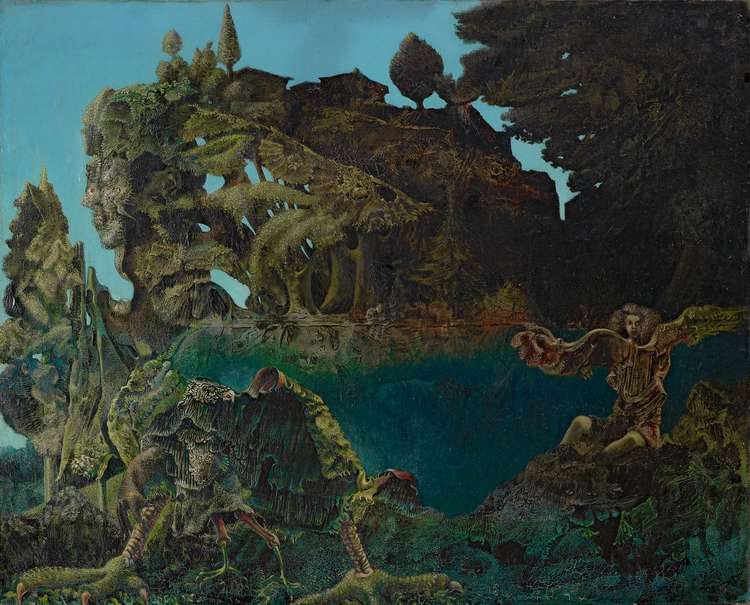Decalcomania-Intro to Drawing Bad Art Course (Patreon)
Content
Today we’re doing another Forgetting the fundamentals session where we focus on a technique or method of making art that is less about technical skills and more about play.
We’re going to do explore a surrealist art technique called Decalcomania.
Outside of this surrealist technique, Decalcomania is a decorative technique that involves transferring an image or design from one surface to another. It’s basically a sticker. It became popular during the Victoria era as an affordable way to add intricate colorful designs to stuff.
In surrealism, artists took the mechanical process of decalcomania- transferring ink or paint from one surface to another- but without the prepared design part. Just using the random textures and marks that the process itself creates. Transferring raw paint or ink Rather than creating a graphic design to transfer to a surface. And those textures or marks then become the basis for their work, or sometimes a finished piece on its own.
Oscar Dominguez was one of the artist to explore this technique. He described this method as “decalcomania with no preconceived Object."
Much of Oscar Dominquez’ and other early surrealists decalcomania work has the feeling of otherworldly landscapes. They would often do the decalcomania and then leave the textures as the completed artwork. Allowing the viewer’s mind to interpret the textures. Like this 1936 piece by Oscar Dominguez.

My favorite artist who uses this technique is Max Ernst.
Two of his paintings in particular, Swamp Angel and the Eye of Silence, merge realism and this abstract surrealist technique in the most masterful and subtle way.
I really like this quote about Ernst’s approach to art and seeing the world:
“The first way to see is with your eyes open looking out at the world. At reality. At what is objective. The second way to see is with your eyes closed. Focusing on your inner world. I believe that the best way to see is with one eye open, focused on the reality of the world, and one eye closed focused on the inner world. The result is a synthesis of subjective and objective.”
I always try and keep that in mind when I’m working in this technique.
and objective.

One of the things I love about this process is that many times you don’t know where it’s going to end up when you start drawing what you see. Sometimes you don’t even see much in it. You just start and then at a certain point you see it.
Sometimes I like to imagine that the piece is already in there. And through just adding small lines and dots you can bring it out.

